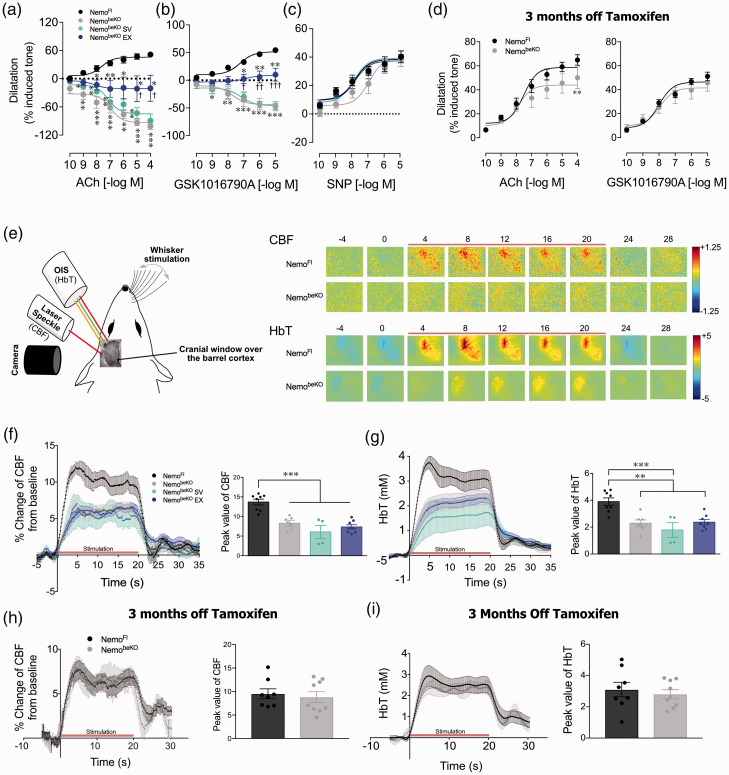Figure 2.
Cerebrovascular reactivity tested in isolated cerebral arteries showed that NemobeKO mice had impaired responses to endothelium-dependent dilators acetylcholine (ACh) and TRPV4 channel opener (GSK1016790A), now being reversed to constrictions (a and b). In contrast, the dilatory responses to the smooth muscle relaxant NO donor sodium nitroprusside (SNP) were unaltered (c). Similar findings were seen in mice treated with simvastatin (SV) that significantly differed from both NemoFl and NemobeKO mice that exercised (EX) at several concentrations of ACh and GSK1016790A. NemobeKO EX mice showed significantly improved responses but these still remained different from controls (A and B). In the recovery cohort, cerebral vessels dilated well and only differed from control NemoFl mice at the highest ACh concentration (d). N = 4-5 mice/group. One-way ANOVA with post-hoc Newman-Keuls multiple comparison tests were performed *,†p < 0.05, **,††p < 0.01, ***, †††p < 0.001 compared NemoFl control mice or to other NemobeKO groups. Schematic representation of the setup used in mice with cranial window over the barrel cortex to measure hemodynamic responses to whisker stimulation using laser speckle contrast imaging (LSCI) and optical imaging of intrinsic signals (OIS) (e, left). Representative time course of changes in cerebral blood flow (CBF) and total hemoglobin (HbT) levels evoked by 20 s whisker stimulation (indicated by red bar) (E, right). Regardless of treatments, NemobeKO mice had significantly lower CBF (f) and HbT (g) whisker-evoked responses. In the recovery cohort, no differences between groups were observed in CBF (h) and HbT (I). N = 4–8 mice/group. One-way ANOVA with post-hoc Newman-Keuls multiple comparison tests were performed **p < 0.01, ***p < 0.001.

